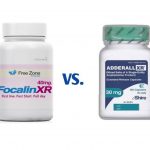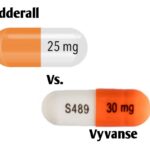Differences and Similarities between Medications for Inattentive ADHD and Hyperactive ADHD

Attention-Deficit/Hyperactivity Disorder (ADHD) is a neurodevelopmental disorder that affects millions of individuals worldwide. It is characterized by symptoms of inattention, hyperactivity, and impulsivity. ADHD is a relatively common neurodevelopmental disorder that affects both children and adults. It’s estimated that around 5-10% of children and adolescents worldwide have ADHD, with boys being more commonly diagnosed than girls. ADHD can persist into adulthood, with approximately 2-5% of adults also affected. Prevalence rates vary across countries and cultures due to factors like diagnostic practices and awareness.
ADHD can present in different subtypes, with two of the most common being Inattentive ADHD and Hyperactive ADHD. While these subtypes share some core features, they also have distinct characteristics. As a result, medications used for treating each subtype can exhibit both similarities and differences.
The Common Ground: Understanding ADHD Subtypes
Before diving into the nuances of medication treatments, it’s essential to grasp the core characteristics of Inattentive ADHD and Hyperactive ADHD.
- Inattentive ADHD: This subtype is primarily marked by symptoms of difficulty sustaining attention, organizing tasks, and following through on instructions. Individuals with Inattentive ADHD often struggle with tasks that require prolonged focus, such as studying, completing assignments, or listening to long conversations.
- Hyperactive ADHD: Hyperactive ADHD, on the other hand, is characterized by hyperactivity and impulsivity. People with this subtype may have trouble sitting still, exhibit excessive fidgeting or talking, and find it challenging to wait their turn in conversations or activities.
Similarities in Medication Approach
Both Inattentive and Hyperactive ADHD subtypes are treated using medications that belong to the stimulant and non-stimulant categories. Stimulant medications, such as methylphenidate and amphetamine-based drugs, are the most commonly prescribed. These medications work by increasing the levels of certain neurotransmitters, like dopamine and norepinephrine, which help improve attention, focus, and impulse control.
- Stimulant Medications: For both subtypes, stimulant medications are often used as the first line of treatment. These medications are known to have a rapid onset of action and are effective in alleviating symptoms in many individuals.
- Non-Stimulant Medications: If stimulant medications are ineffective or cause adverse effects, non-stimulant options like atomoxetine and guanfacine may be considered. These medications also target neurotransmitter imbalances, but they do so in a different manner than stimulants.
Distinct Medication Considerations
While there are shared medication options, the choice between stimulant and non-stimulant medications, as well as the specific medications within each category, can vary based on the ADHD subtype and individual patient characteristics.
- Inattentive ADHD: Individuals with the Inattentive subtype may benefit from both stimulant and non-stimulant medications. Stimulants can improve focus and attention, helping individuals overcome their challenges with sustained concentration. Non-stimulant options might be considered if stimulants lead to adverse reactions or if co-existing conditions (such as anxiety) are present.
- Hyperactive ADHD: Stimulant medications can be particularly effective in managing hyperactivity and impulsivity associated with this subtype. These medications can help individuals regulate their behaviors and impulses. However, care must be taken to monitor potential side effects, such as increased heart rate or blood pressure.
Conclusion
While medications for Inattentive and Hyperactive ADHD subtypes share some commonalities, such as the use of stimulant and non-stimulant options, there are also significant differences in how these medications address specific symptoms and individual needs. The choice of medication should be based on a comprehensive assessment of the individual’s subtype, medical history, potential side effects, and response to treatment.
Ultimately, the goal of ADHD medication is to improve the quality of life for individuals by reducing impairing symptoms and promoting better functioning in various aspects of life, such as academics, work, and relationships. Consulting with a qualified medical professional is crucial to determine the most appropriate medication approach tailored to the unique needs of each person with ADHD.





